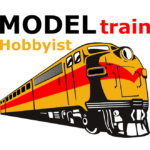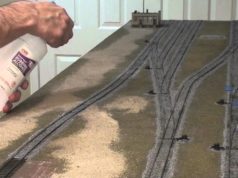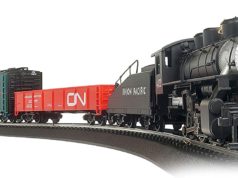There are many different aspects involved in the fascinating hobby of model railroading, and one that is open to a great amount of creativity and imagination is the creation and addition of railroading scenery and structures.
A model railroad display does not come to life until the scenery jolts it into reality. It is incredible what even a few basic scenery elements can do for adding realism to even a very basic railroad display.
Here are some tips that will help you in the scenery and structure design of your own model railroading layout:
- Passenger Cars – Model passenger cars are more realistic looking when they contain people. It may require a bit of effort for some models such as disassembling a rail car, for example, but it makes an incredible difference in the real life appeal of your scenery.
- Timeline – Keep your scenery additions specific to the era of your model layout. If your railroad is designed to portray the roaring 20’s, a 1957 Chevy would be out-of-place and inappropriate in the layout.
- Consistent Scale – It may be tempting to purchase structures and accessories on sale that are not in your particular model railroad scale. This should be avoided, however, because the best model railroad designs keep everything in the correct scale for uniformity of design.
- Scratch-building – It is not necessary to purchase all of your structure and scenery items. Some of the best model railroad scenery designs include many additions that are found or created at home. Using actual tree branches, grass, leaves, sand, dirt, or bits of hay can add a very realistic and authentic touch to your railroad design.
- People Population – Mix and match scenery items, especially an item such as people. While you want to place figurines in your layout that are specific to the era you are attempting to achieve, don’t purchase all of them from the same manufacturer. Add variety and a more realistic touch by mixing and matching different figurines from various suppliers.
- Weathering – Don’t hesitate to rough up your structures and accessory buildings a bit for a more authentic look. You don’t want every building in your design to look like it just came from the model train store.
For example, if you want to achieve an old worn building or barn look, scratch and gouge the surface a little bit using small tools or sandpaper. Then apply hobby paint mixed with paint thinner. For a metal building you might use blue, black, and gray. For an old barn, you might use shades of brown, black, and tan. Before the paint dries fully, wipe some areas off with a rag. Apply extra paint in the scratched and gouged recesses you created with the tools or sandpaper and don’t wipe these areas off.
- Interior Design – Decorate the interiors of some of your structures. Thin paper can be used for drawing curtains or blinds. Fabric scraps can also be used as makeshift curtains on window interiors by gluing the fabric to paper or cardboard and applying to the window surface.
- Advertisements – Make your own “era specific” advertising billboards and signs. You can find images online, in magazines, and in old newspapers and scan and resize them. Then glue or decoupage them to flat surfaces, add legs for standing them up, and place throughout your railroad display.
- Animals – Animal figurines are a great addition to model train scenery. The animals you choose, of course, are dependent on your specific model theme and era. If you have a western theme, for example, horses, cows, and chickens would be appropriate. If you have a scrap or railroad yard theme, some stray dogs and cats would fit in well.
- Tis the Season – Some hobby train enthusiasts modify their layouts according to the seasons. You can string Christmas lights and add snow for winter. Pumpkins on porches are a nice touch for Halloween along with some trick-or-treaters and a haunted cemetery.
One of the most important points to remember about your model railroad scenery is that you are limited only by your own imagination and creativity. While the track, the locomotive, and the rolling stock are essential components in your set up, the entire display does not come to life until you breathe air into it with lifelike scenery elements that make your individual model train layout unique. All aboard!






